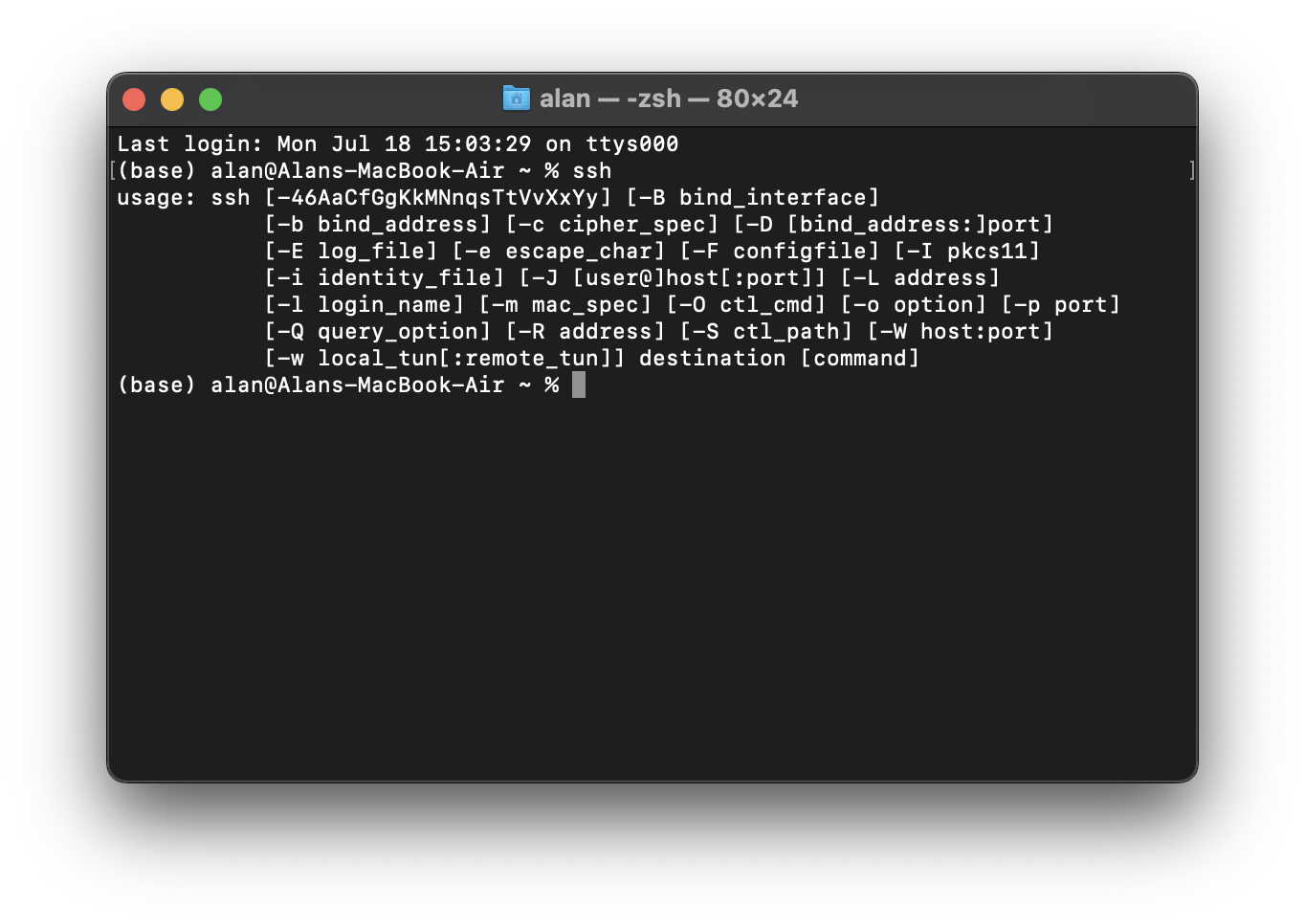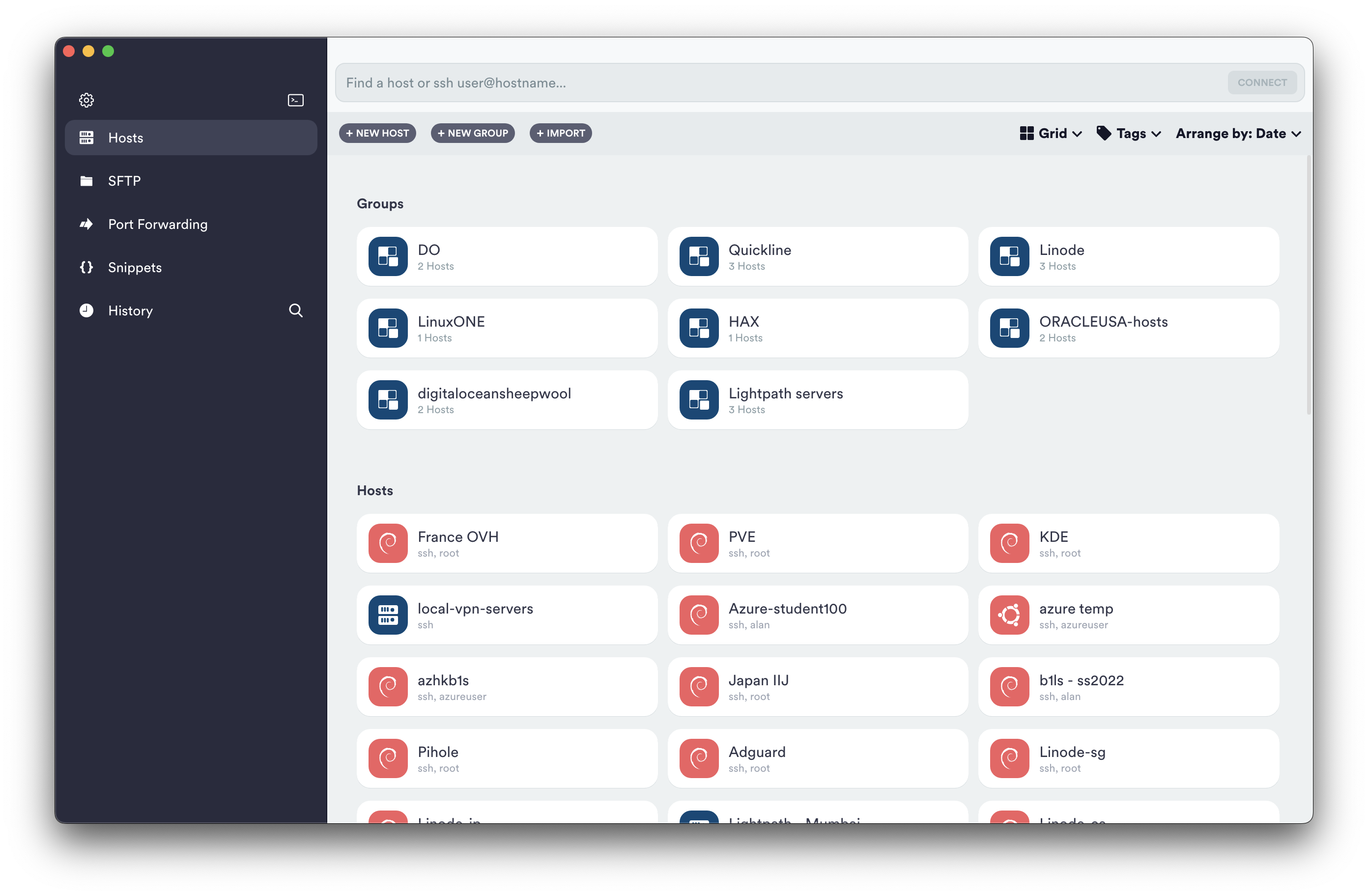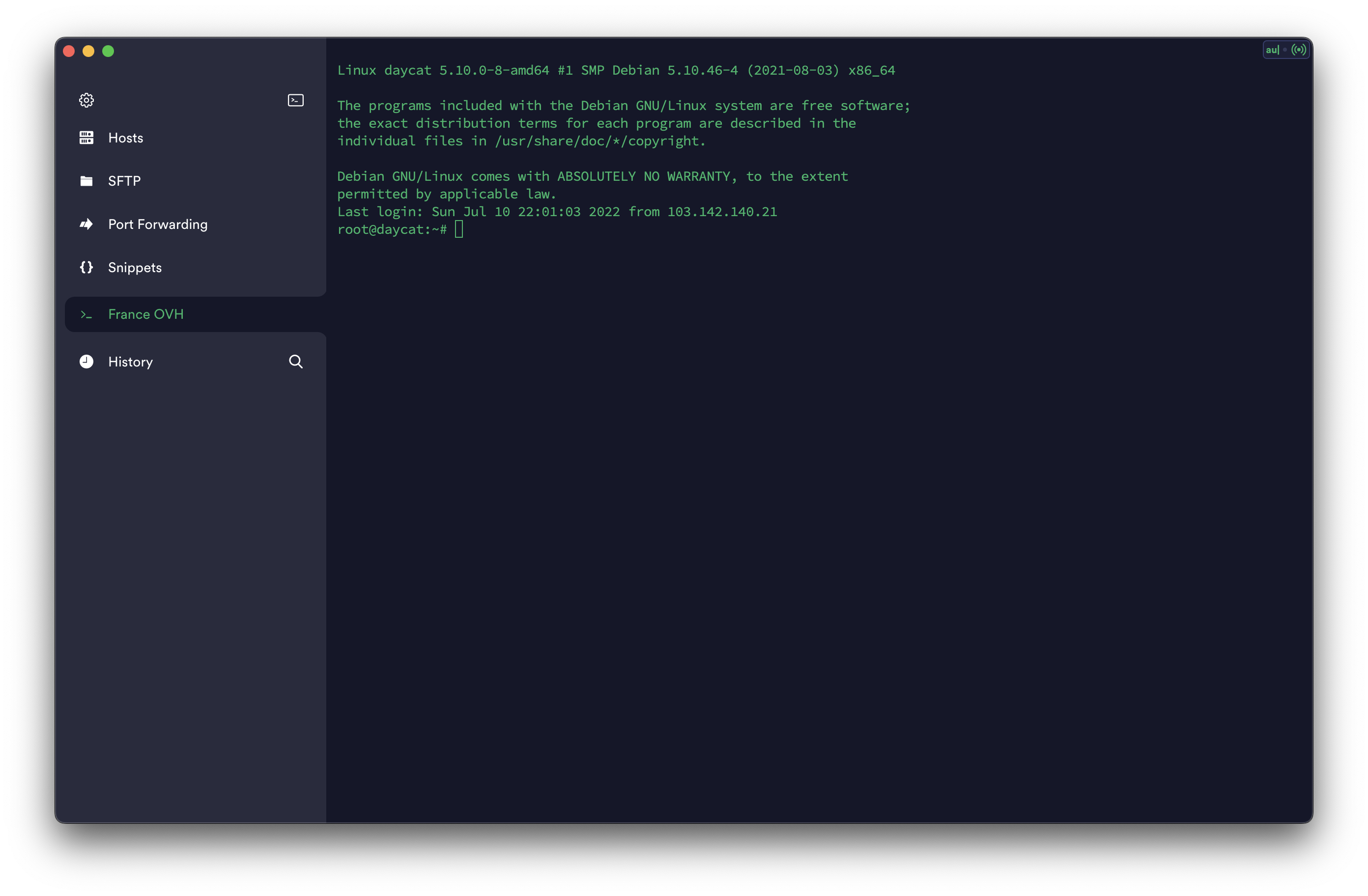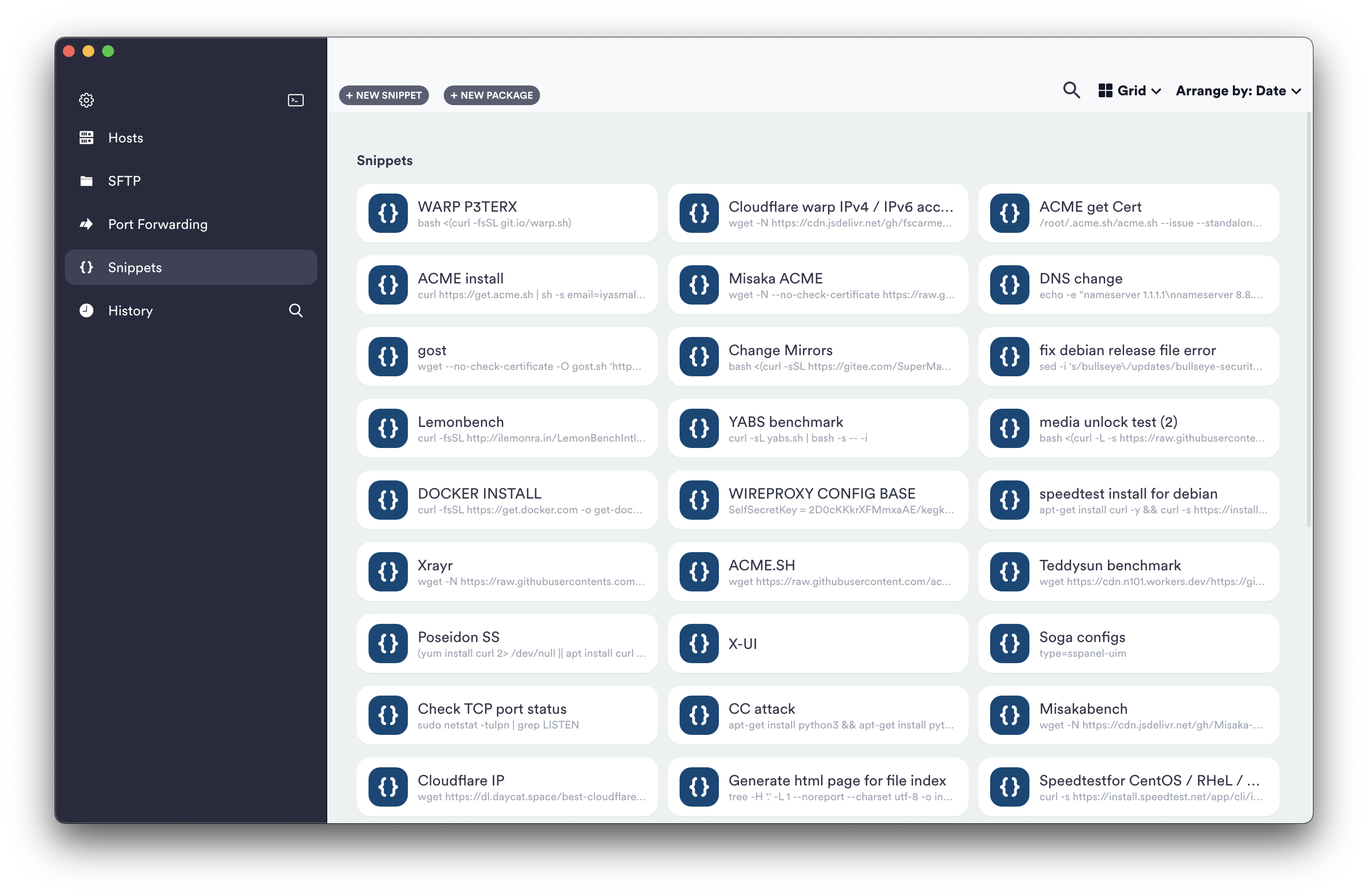# Connecting to your VPS

The most popular way to control a remote linux server is by using SSH - short for 'Secure Shell Protocol'. It allows users access a server, transfer files, and do whatever they would like to - like what they could do when they have a physical keyboard plugged in.
Of course, as it is a very popular technology, there are many different ways to use it and many different software with their own implementation of the protocol.
# SSH Software
# OpenSSH
# System requirements:
Windows 10 - 1908 or higher
MacOS
Linux - Most distros
The OpenSSH software is a piece of software that is included in almost every OS. It is a simple CLI client for SSH.
# Launching a terminal
The openSSH software lives in your terminal. To open your terminal, you should follow these instructions for your OS:
Windows: Press the WIN key and search for 'CMD'
MacOS: Launch spotlight (Command + Space) and search for 'terminal'
# Usage:
Ssh <Username>@<IP> -p <port>
For example, if I have a NAT VPS that I need to login with the username 'alan', ssh port 23941, and IP address 13.30.123.4:
ssh alan@13.30.123.4 -p 23941
# Downsides
There's no convinient way of transferring files, storing passwords, and server details. At least, not easily. Hence, a better approach is to use a GUI client for doing all of this.
# Other clients
| Name | Platform | Cost | Downsides | Recommendation Index (0/5) |
|---|---|---|---|---|
| MobaXterm | Windows | Free version for home use | Free version is limited | ⭐⭐⭐ |
| XShell | Windows | Free for home / educational use | Dated interface | ⭐⭐⭐⭐ |
| PuTTY | Windows | Free | Unintuitive interface | ⭐ |
| FinalShell | Most desktop OSes | Freemium | Horrible user experience | ⭐ |
| Termius | Most OSes | Free 'Hobby' version | ⭐⭐⭐⭐⭐ | |
| Tabby | Most OSes | Free | CLI only | ⭐⭐ |
| JuiceSSH | Android | Freemium | Energy cruncher | ⭐⭐⭐⭐ |
| Shelly | IOS | Freemium | ⭐⭐⭐⭐⭐ |
# My top pick

I use termius for most of my SSH-ing and else.
With a modern design, wonderful syncing, and a wide range of supported devices, its hard for other competitors to beat it.

One very useful feature of Termius is the ability to save and sync code snippets. This means that instead having to record down everything in a notebook, or having to read pages of documentation to remember how to do something, you could just save it in an easily accessible sidebar, where you can easily access it whenever you need.

A tutorial dedicated to Termius will be coming soon 😄